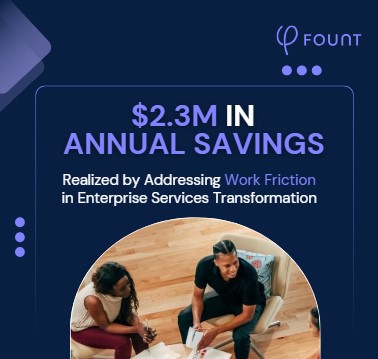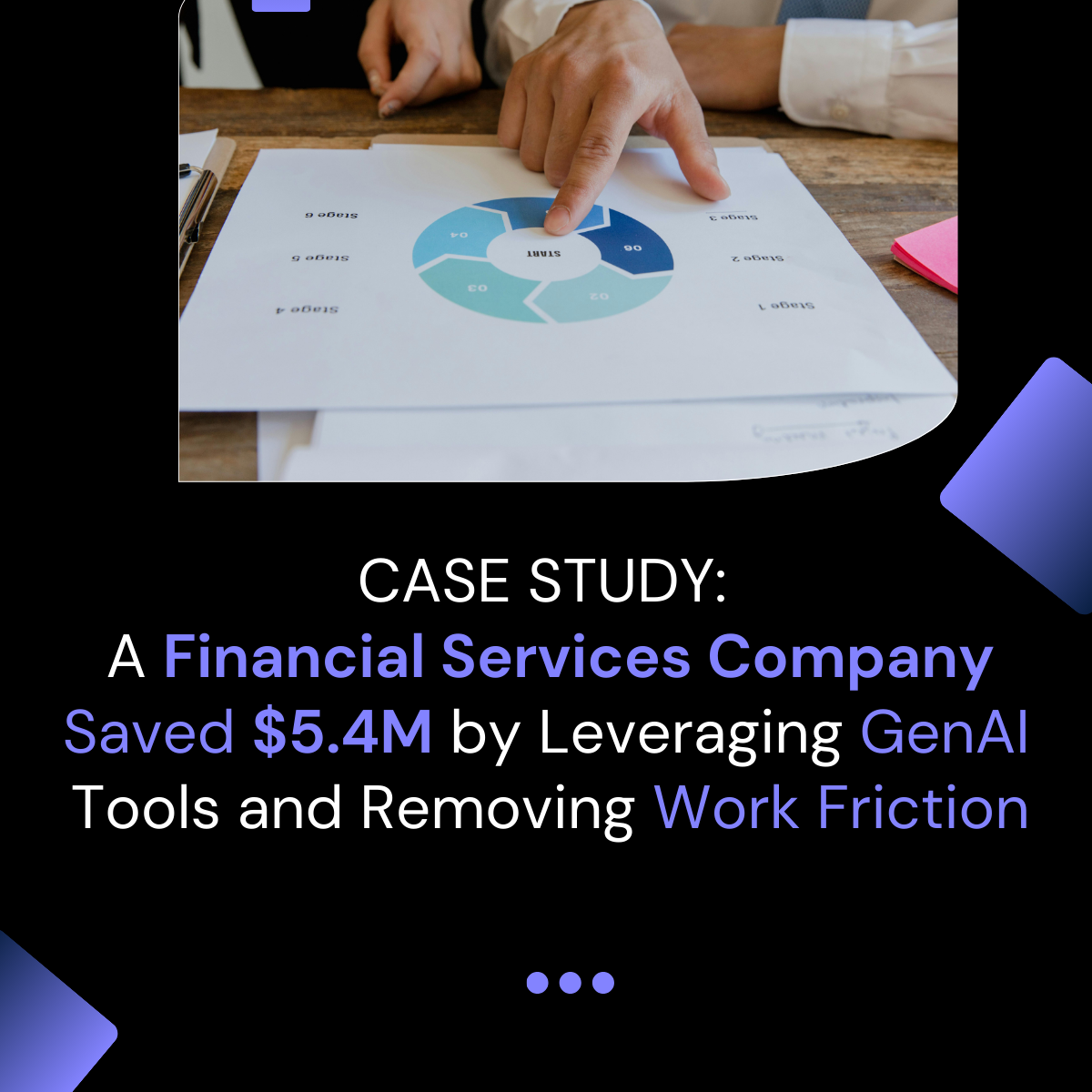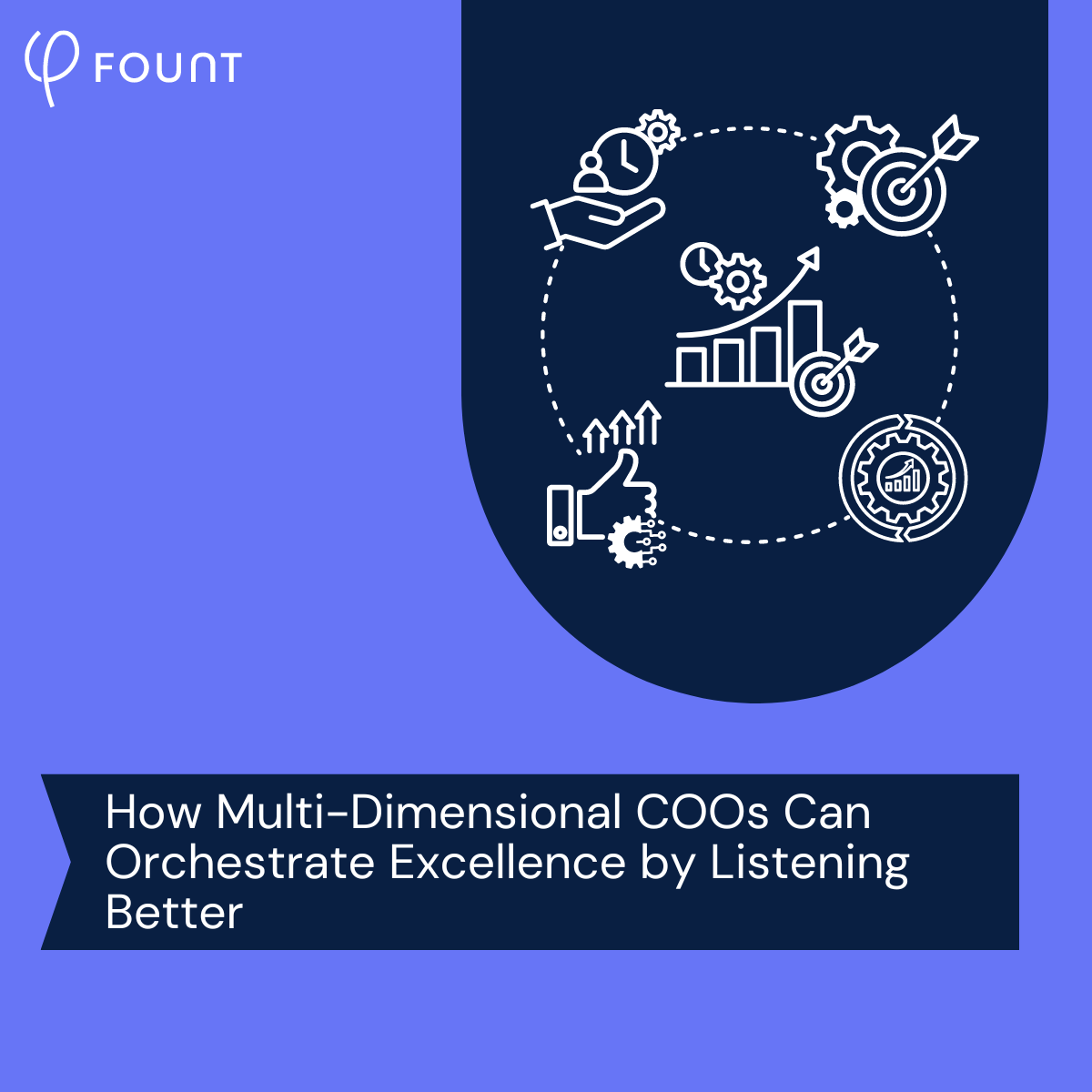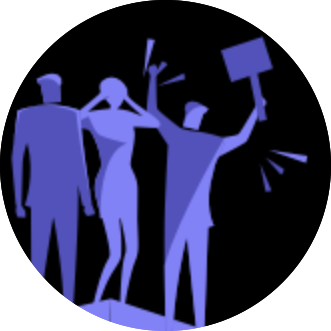PODCAST: Managing Friction to Improve Your Employees’ Work Experience
A summary of the details of the article will go here.
Christophe Martel, CEO and Founder of FOUNT was invited back on Paychex PULSE, an HR Podcast, to talk more about work friction and employee experiences (be sure to catch his first episode, Employee Experiences: One Size Doesn’t Fit All).
Hear as he and host, Rob Parsons talks about friction management – what it is and how it can positively impact employee experiences at your company. Watch it here or listen to the podcast using any of the links below. A full transcript is pasted below.
Podcast available at:
- Paychex
- Apple Podcasts
- Spotify
- YouTube
- iHeart
Topics include:
- 00:00 – Welcome, Christophe Martel
- 00:52 – What is employee experience (EX)
- 02:51 – Why is EX important?
- 03:59 – The cost of work friction
- 06:20 – How friction lowers productivity
- 07:44 – The impact on turnover rates
- 08:32 – Hyper-focused friction management
- 11:36 – The role of the HR pro
- 12:09 – How data and technology tools can help
- 14:44 – The little things matter
- 17:05 – How HR teams are thinking differently
- 22:50 – Wrap up
Rob Parsons Welcome to season four of Paychex PULSE, an HR podcast, where HR professionals can find great insights on today’s top issues and be inspired to build and lead effective teams in a healthier workplace.
Rob Parsons Hi, everyone. Welcome to the Paychex Pulse podcast. Rob Parsons here. We’re joined again by Christophe Martel, CEO and Founder of FOUNT, an organization that focuses on helping companies improve employee experience. Huge topic, we all know. Today we’re going to dig into hyper-focused friction management and the positive impact that can have on your organization.
Rob Parsons Christophe, welcome back to the podcast.
Christophe Martel Good morning. Good morning, Rob and thanks for having me.
Rob Parsons Oh, it’s a pleasure. We had a great conversation a few months back about employee experience, just in general, a very high-level view. We were talking about your research report, some of the things I saw at HR Tech. To level set, for those that didn’t catch that episode, what does it mean when you talk about EX, when you talk about employee experience?
Christophe Martel So, experience is really just the employee perspective on their life at work, just like the human experience is our own perspective on our life in general. And it turns out that life at work is really complex. Lots of things happening, lots of activities in the space of an eight-hour window and often more, and just very complex environments for people to interact with. So if you think about typical customer experiences that we know of like, I don’t know, buying a pizza from the pizza shop next door, it is not that complicated and it is a pretty linear experience.
Christophe Martel If you contrast that to what happens in a whole day of work for, let’s say, a nurse or a call center agent or just a developer, you end up interacting with hundreds if not thousands of touch points that are either physical, digital, or human across a day. And that complexity is what makes employee experience difficult to understand. It’s a lot easier to understand what happens between you and your pizza than between you and your work. So, that is employee experience. It is important because when people have a good experience at work, two things happen. Number one, they perform better simply because there’s just less friction in their day-to-day work, and also they stay longer, and that means that turnover goes down, which is a good thing for companies.
Christophe Martel So, that’s the topic for the day, and it is a problem that company have problem. It is a field that companies are discovering and realize that traditional approaches to human resources management end up missing the mark somewhat on how to manage employee experience, in particular understanding and improving these hundreds, thousands of interactions that people have at work. How do you do that with all that complexity of stuff happening? And that’s the game.
Rob Parsons And when we talked last time, it really was eyeopening to me. It’s not an experience, it’s the combination of hundreds of thousands of discrete experiences and they add up, and all it takes is a couple bad ones to wreck the whole show. And I loved how you used the word friction to describe those hurdles, describe those points that are troublesome like gears that aren’t clicking together correctly. Tell me more about friction and what is it really costing companies.
Christophe Martel Good. The term employee experience, and I think we went into this last time, tends to describe the aggregate experience that people have with their company overall for the amount of time that they’ve worked with that company. And that’s a useful thing to understand, but where that experience is created is actually in almost the crucible of day-to-day interactions. And in these interactions, all kinds of things happen. They’re very rich. So if you think about, for example, an individual trying to find a new internal role at the company, the interaction is likely to encompass things that have to do with the manager, with the career framework, with the internal recruitment process and all kinds of things. And the question there is, what gets in my way?
Christophe Martel So, when I try to go and find that new internal role, all of these things are supposed to work, but often they don’t. And often when you combine them, they really don’t. So friction is really, in particular, what we call work friction. Like for example, process friction that exists in companies when processes are not efficient is one thing. Work friction is actually the friction that employees experience. So when I do X, what gets in my way that shouldn’t be there?
Christophe Martel So, work friction really has two economic impacts on companies. The first one is that it makes people less productive. And actually, there was a study from Gartner that calculated that work friction costs on average about two hours a day to an average employee at a company today in the United States. Two hours a day, if you calculate that for an average Fortune 500 company is about 500 million a year of wasted… It’s essentially wasted work.
Christophe Martel If I’m a shareholder, I’m paying employees to work and wasting 500 million because they’re dealing with nonsense. That feels like low-hanging fruit, to be honest, to go after. So, that is the first very immediate impact. If you are able to reduce work friction, it can never go away entirely, but if you can reduce it, you immediately make people more productive, they perform better. And guess what? Most individuals actually aspire to performance, so ….
Rob Parsons Yeah. I don’t wake up in the morning saying, “I’m going to do a bad job at work today.”
Christophe Martel Exactly. So, most people show up saying, “I’m going to trying to do my best. If only you stop getting in my way, that would be helpful.” And so, the second financial impact is on turnover rates. And so on average, and it’s hard to attribute it a hundred percent to friction, but it’s anywhere from two to 500 million a year in annual turnover reduction, in financial value of that turnover reduction, for an average F 500. And for some companies that have very high attrition rates or some businesses within companies that have very high attrition rates, that figure can be much higher.
Rob Parsons So, I want to get practical here, if you don’t mind. Dig in a little bit. You didn’t just call it friction management. You call it hyper-focused friction management. What do you mean by that and how do I put that in place? It’s nice to talk about. How do I make that happen? What are you talking about there?
Christophe Martel Yeah, so actually one of our customers described work friction as that huge bear or elephant that is just sitting in the living room that no one knows how to deal with, and so everyone just leaves it there. And so that big problem, because everyone knows it’s a big problem, no one knows how to approach it. And I would hate to do that to a bear or to an elephant, but how you approach that kind of thing is by breaking it down. And to break it down, you essentially need data to be able to identify what are the most important causes of friction for our employees? What is it that they see that is really getting in their way? What is causing it? And there’s hundreds of culprits, and in smaller companies, it may be dozens of culprits. And just start with the first two or three and go and have an impact on them.
Christophe Martel And so, what’s beautiful about this approach is that it is not about solving it, because as I mentioned earlier, friction can never entirely go away. It’s just like entropy. It never really goes away, but you can really reduce it and manage it, and reducing friction for one particular activity that people do. One example we had from one of our customers was in a warehouse where there was just not enough flight for people to be able to do their job right. There’s an example of, well, actually make the light work better so that people can see what they’re doing. Now, it’s not perfect, it doesn’t solve it all, but it makes things better.
Christophe Martel The second example, if the way shifts are managed in a retail environment is really a problem for employees, it’s not working for them based on what they have to do in their life, again, make that simpler, fair. And these are things that actually are owned, of course, by the business, but also by HR. And HR has a role to particularly HR business partners or people that are aligned with the business to be the voice of employees for these things. But what HR business partners don’t have is data that tells everyone and puts everyone on the same page as to those things that are creating friction for everyone and how important these things are.
Rob Parsons You got to what my next question was, and you you’d been touching on it. How can an HR pro really, and a business partner, help with this? I’ve got a lot going through my mind right now. One is that it’s so interesting, just like you talked about the experience, is hundreds of tiny things altogether. You don’t just fix experience. You’ve got to think about all of the things. You’ve also made it very clear that friction is the same way. It’s not just I fix friction. You’ve got to determine these things. And I want to touch on that HR role a couple ways.
Rob Parsons First, let’s start with this idea of data with understanding where I can get the most bang for my buck, as it were. We talk a lot about employee communications, survey instruments, feedback mechanisms, technology tools to help with that. That really is the domain of HR, isn’t it? And you talked about it, being the advocate for the employee and bringing that back to the business. Here’s where you can really make a difference if you can do A, B, and C. You don’t have to do the entire alphabet right now, but if we could just do A, B and C, we can really have an impact.
Christophe Martel That’s right. So, I spent most of my career as a business leader before moving to HR. And as a business leader, all I wanted to know was what do I need to fix to help my people perform better and stay longer? Just tell me HR, please. Often the message is a little bit muddled because most tools out there are very good at telling HR and the business how people feel, and that’s actually quite useful because then you can address those feelings and try to essentially make people feel better about their employment of the company.
Christophe Martel The data they need to manage friction is not data about people, it’s actually data about the environment in which they work and how that environment constrains their work or works for them or not. So HR as a world is actually very, rightfully so, focused on people but actually needs to build that capability to not only understand people, but understand the environment in which they operate. And that environment is that very complex ecosystem of human, physical, and digital things that they interact with constantly.
Christophe Martel Friction comes from contact between an employee and a thing in the company. When that contact is smooth and frictionless, then great, but often it’s not. And once you get a map of what are the main offenders and the things that really matter, just like the light or the shift or whatever, all these things, then you can actually act on it and maybe not solve it forever, but make it feel a little bit better, even 10% better.
Christophe Martel So, there’s a notion of iterating your way into a continuous improvement group to make the environment in which people operate better. And you can start with just one thing, and that’s the beauty of it, that you don’t have to try to fix everything all at once forever with a perfectly elegant solution. It’s just lots of small things that actually will improve friction over time.
Rob Parsons And these can be meaningful, tangible things employees can see that you’re making the effort.
Christophe Martel Absolutely.
Rob Parsons You’re not just talking.
Christophe Martel You see this in our data. What’s interesting is that when you approach the question in that way, this whole notion of survey fatigue is people don’t like to tell a company how they feel about it, but once you’ve been asked, it’s like, “Okay, just back off already.” However, if you tell them that you want them to point to things that are getting in their way at work, they’re usually very happy to respond to surveys because they…
Christophe Martel As long as the company holds its part of the bargain, which is to go do something about that feedback, which actually turns out that they can do because it’s not about doing something about the employee, it’s about doing something about the things that they control, processes, policies, tools, et cetera, then it’s actually a good bargain for both employees and employers to say, “Yeah, we’re together. We’re going to make this environment better.” And this term that we’re using internally of friction fighters, whether it’s people in HR or business leaders, IT, whoever contributes to that environment, working together with employees who are involved in this effort to reduce work friction, that’s what we call friction fighters. And it’s actually a common cause for both the shareholders and employees, which is rare enough to be mentioned.
Rob Parsons Yes, for certain.
Rob Parsons The second point I want to touch on with HR, it was something you mentioned earlier, and it isn’t just doing my job, but it’s being at work, looking for that promotion, looking for a training, looking for whatever it may be. HR is a whole another layer that I’m interacting with at the company. And HR can, by accident, create its own friction, which isn’t necessarily how I’m doing my job, but how I am experiencing your company. I’m experiencing my life at your company.
Rob Parsons Tell me a little bit about HR teams and some of the things they’re doing and how they have to maybe think about it a little differently. Not just a bolt on, but think about what they’re doing to be a part of the employee experience. Well, they are. What they’re doing to make it better or worse.
Christophe Martel Yeah. Maybe the best example I could think about for to highlight, to illustrate this, is an HR very senior executive in a very large, very successful famous company in the United States told me, “I designed the parental leave process and it was perfect, and then I had two kids and it was horrible.” So that’s it. HR is typically expert at designing flawless processes that actually, seen from the top, work perfectly well. However, when individuals consume these processes that usually are not single processes, you always consume processes and policies and all kinds of things all at the same time, that cocktail is really what doesn’t necessarily work for people.
Christophe Martel How HR can pivot essentially is to try to understand what creates friction for employees. And by the way, when you ask employees what creates for friction for them, the answer that you get is always very different than what HR thinks the answer is, and simply because HR doesn’t experience these things, and to be able to see the friction, you need to experience it. So as we say at FOUNT, “People who do the work are in the best place to know work friction and to identify it.” So that’s the first thing that HR can do, is to spend more time understanding that perspective, rather than perfecting their process design skills.
Christophe Martel The second thing is actually when resolving these points of friction that you identify is to, again, not use the traditional tools that HR typically use, which is, okay, now we understand there’s a problem there, we are going to redesign the process and we’re going to go on top of the mountain, think about the perfect solution, and then come back down and it will rain back down on our people and it’ll work, and then we’ll get feedback on how it works. Actually, things need to be, unless they’re really very basic fixes, need to be co-created. And what that means is that employees should be part of building the solution with HR as an orchestrator or facilitator.
Christophe Martel And one example that I want to give from actually a small company was new hire attrition happening because these new hires had a hard time doing the work that had been designed by people that had been in the company for 10 years. So people that knew perfectly how to do the work created the workflow, and you had these new hires coming in and saying, “I can’t do this. It’s too hard for me, and therefore I can’t perform, therefore I’m going to leave.” And this was actually a logistics company.
Christophe Martel And to fix that, what the company and the HR team asked employees to do was to take new hires that had been there for two months and said, “Okay, so to navigate this warehouse, how would you want it to be? How should it work? How should the warehouse be?” And they all came up with a solution that made it a lot more simple for them to navigate it. And actually, even the guys that had been there for 10 years were like, “You know what? It actually makes sense.” Because over time, they’d built DNA to accommodate complexity, essentially.
Christophe Martel So, the notion of co-creation is really important, is that if you want to fix problems that people see, you actually have to involve them in the solving of those problems to get to the best possible outcomes. That truth is valid for small or big companies. And when you get employees in that place where they can not only contribute to identifying what gets in their way and pointing to it and giving you data about it, and number two, to be a part of the solution, that’s a very virtuous circle to get things better and to make their work just easier, faster, which is what everyone wants.
Rob Parsons I love it. That’s a great way to close this out, Christophe. Thank you so much for joining the podcast.
Christophe Martel Yeah, thank you. It was a pleasure. Good to see you.
Rob Parsons It was great. And I just love hearing that real practical advice about improving the employee experience, just get the right perspective and co-create the solution. It sounds simple, and it probably is once you dig into bite-size pieces that you can actually tackle.
Christophe Martel Absolutely. Thank you.
Rob Parsons Fantastic. Thank you again, Christophe.
Rob Parsons Be sure to subscribe to this and our Paychex Thrive Business podcast on your favorite podcast platform. Looking for more ways to keep your finger on the pulse of industry dynamics? Visit our resource center for the latest research, thought leadership, and news at paychex.com/worx. That’s W-O-R-X. Thanks again for joining us. Until next time, please stay happy and healthy.
Related Resources
See all News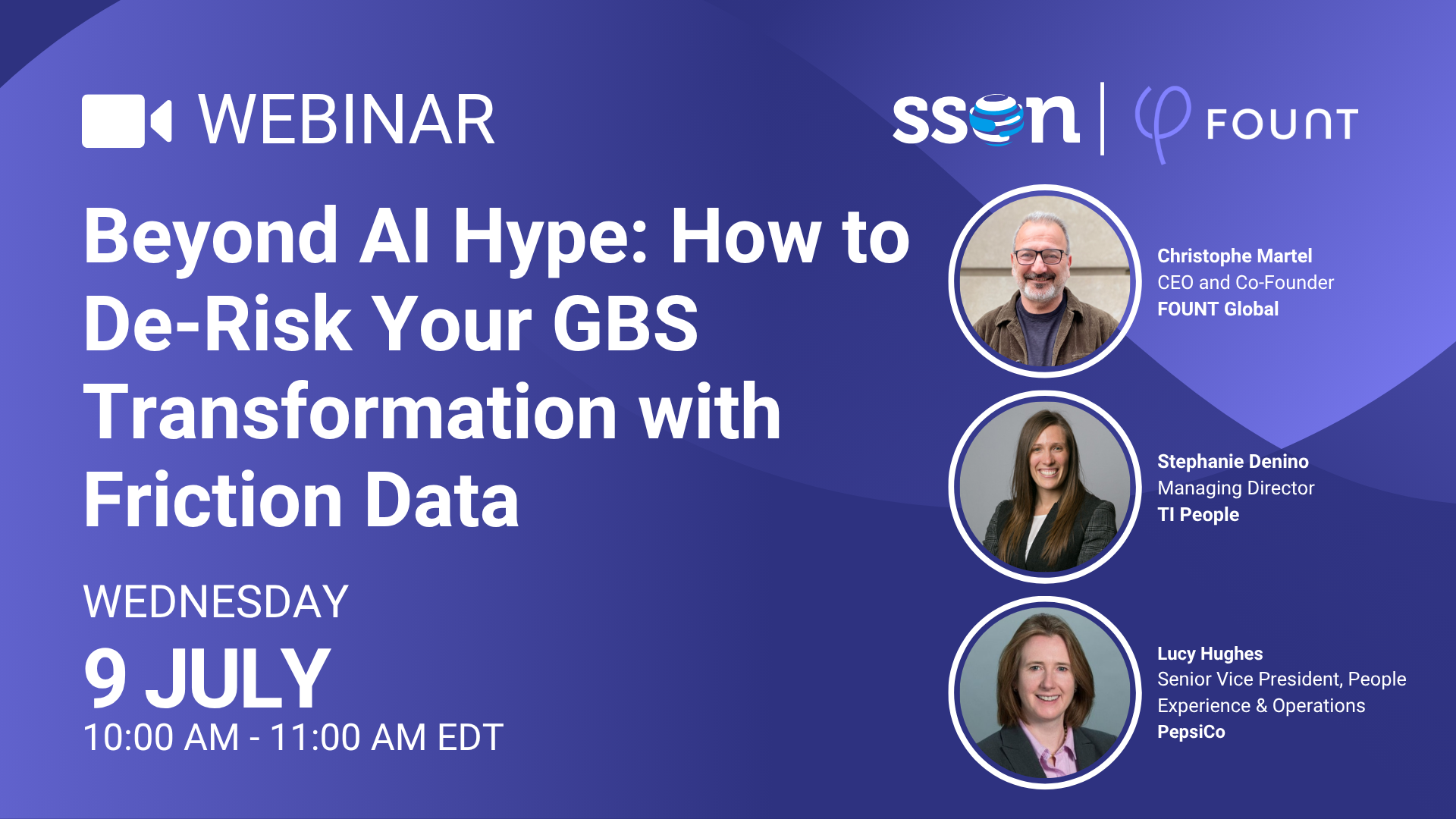
FOUNT News
LIVE Webinar. Beyond AI Hype: How to De-Risk Your GBS Transformation with Friction Data

Guest Post
3 Signs Your GBS Is Creating Friction Instead of Flow (And How to Fix It)
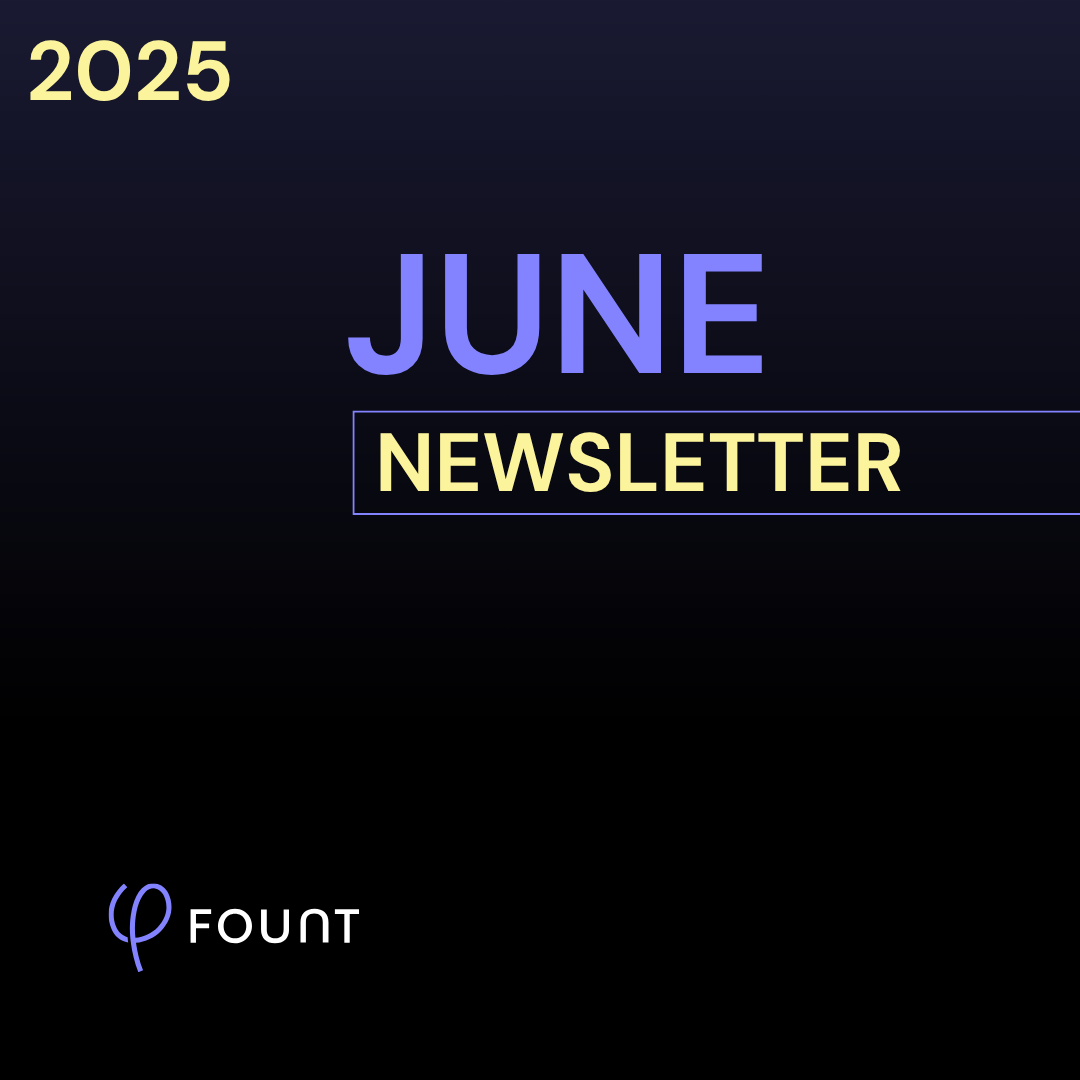
FOUNT News
June Newsletter: Friction is Killing Your AI ROI.
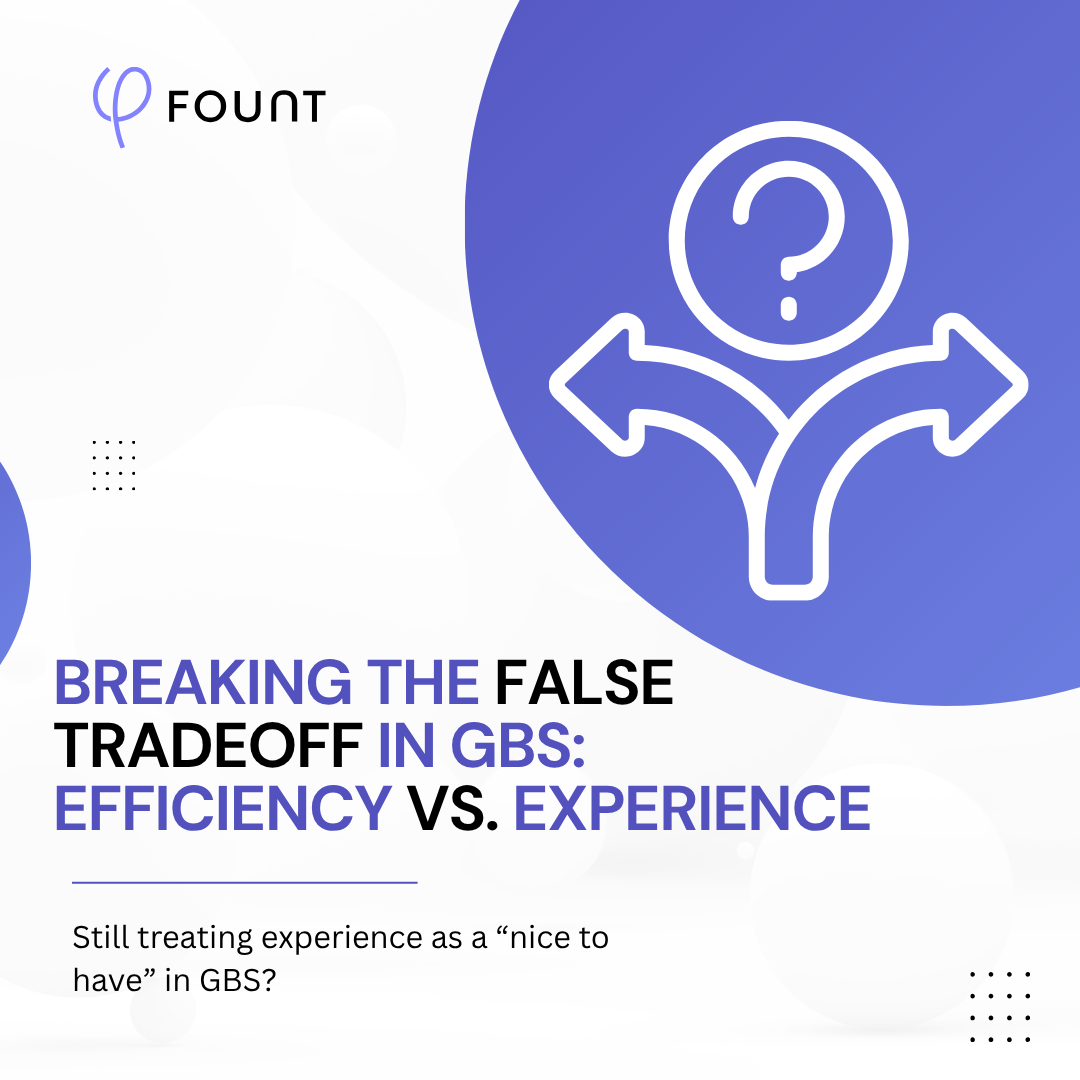
Insights
Breaking the False Tradeoff in GBS: Efficiency vs. Experience

Events
LIVE Webinar – July 9th for SSON Network. Beyond AI Hype: How to De-Risk Your GBS Transformation with Friction Data
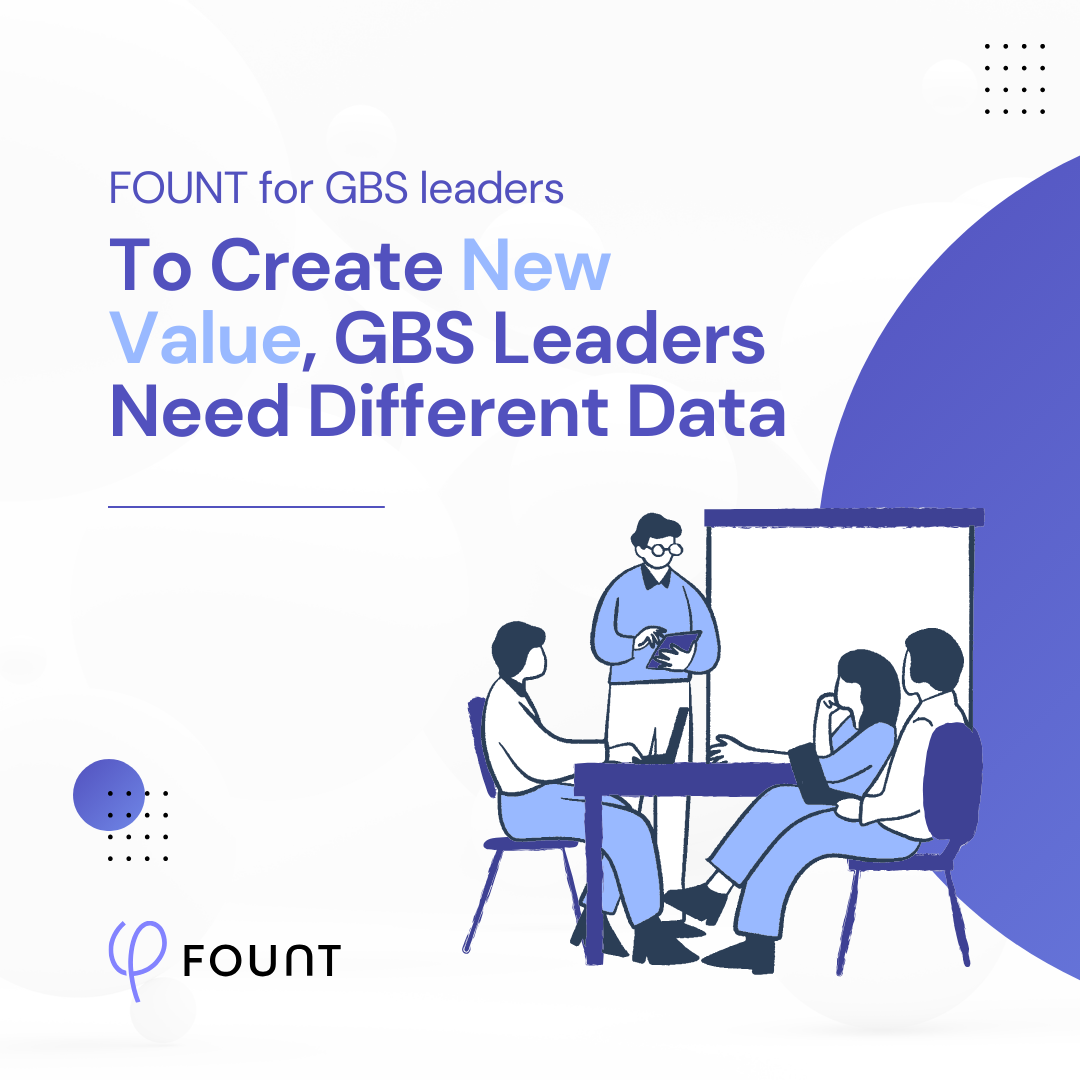
Insights
To Create New Value, GBS Leaders Need Different Data

Insights
How to Keep Up with the Latest AI Developments
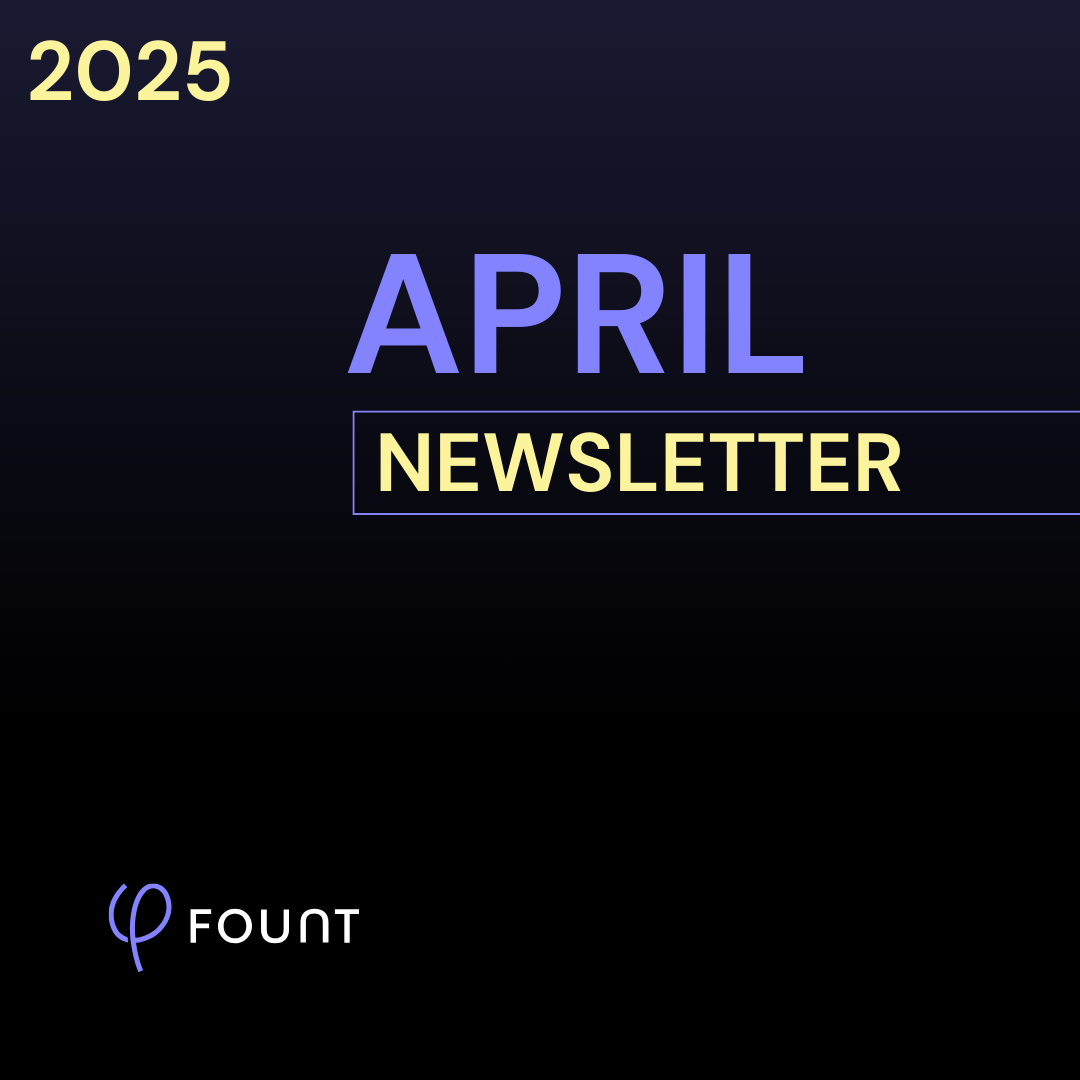
Insights
APRIL Newsletter. Friction: You Can’t Improve What You Can’t See
